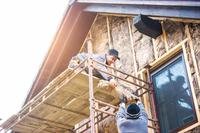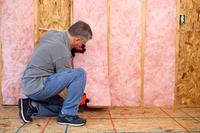Time For Your Winter Move?
To help you prepare your home before you leave for the winter or go on deployment, the Insurance Institute for Business & Home Safety offers these suggestions:
- Turn the thermostat no lower than 55 degrees so pipes don't freeze.
- Drain your water system and turn off the main water source to prevent serious damage from a buildup of pressure if water freezes in your pipes.
- Turn off the water supply to your washing machine, ice-maker, toilets and sinks to prevent flooding from ruptured hoses. Even a small crack can spew hundreds of gallons of water a day, ruining floors, furniture and mementos.
- Unplug electrical appliances, such as the coffee maker, microwave oven, television and computer. If a power outage occurs while you're gone, this will prevent damage to the appliances once the power is restored.
- Check that the sump pump is working to prevent flooding from melting snow or heavy rain during your absence.
- Install a home security system to monitor for break-ins, fire, smoke or carbon monoxide even when you're not there. Also, make sure you provide the security company with the name of an emergency contact who has keys to the house.
Before you leave for an extended period, take these additional steps:
- Ask a neighbor you trust to check on your home regularly while you're gone.
- Stop newspaper and mail deliveries.
- Advise your security company of your plans.
- Don't post your travel plans on Facebook or Twitter.
After a Storm
In the wake of recent devastating storms, property owners are repairing or rebuilding their wind- and rain-damaged structures. As you rebuild, strengthen and protect your home so it will be less vulnerable to storms in the future.
- Start at the top. Look for roofing materials rated for high winds, and make sure to seal your roof. A sealed roof deck can protect against high winds and rain, greatly reducing losses and repair costs. According to the Insurance Institute for Business & Home Safety, the cost to seal the roof of a 2,000-square-foot home is around $500.
- Protect your home's openings. Choose windows, shutters and doors that are impact-resistant and wind-resistant (this is usually indicated on the product label or accompanying paperwork from the manufacturer).
Choosing a Roof Material (Insurance Institute for Business & Home Safety)
Sealed Roof Deck Demonstration (Insurance Institute for Business & Home Safety)
How to Evaluate Opening Protection Systems (Federal Alliance for Safe Homes)
Monthly Reminder
When preparing for a storm or other emergency, you may need to shut off utilities quickly. Make sure all adult and teenage household members can locate your gas, electric and water main controls and have been instructed how to turn them off safely.



